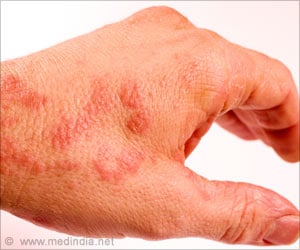Tamil Nadu faces a surge in scrub typhus cases; early detection and preventive steps are key to control.
- Scrub typhus cases spike in Tamil Nadu; symptoms include fever, eschar, and rash
- DPH recommends doxycycline and azithromycin for effective treatment
- Vector control and public awareness campaigns are essential to curb the spread
Understanding Scrub Typhus
Scrub typhus or bush typhus is an infection caused by Orientia tsutsugamushi. The manner through which it is transmitted is by the bites of infected chiggers, or scrab mites which are mostly in places with thick bushes. This zoonotic disease usually targets those farmers who deal closely with animals, people who live close to forests or bushes, people in campsites and organizers of treks, among other persons who play sports outside more often (1✔ ✔Trusted SourceAbout Scrub Typhus
Go to source).
Symptoms of Scrub Typhus to Watch For
- High Fever: This is one of the first symptoms that you are likely to develop in scrub typhus.
- Severe Headaches and Body Aches: These are flu-like symptoms that are more of a ruse.
- Eschar Formation: The disease is characterized by a dark, necrotic ulceration at the site of the bite.
- Rash: The patient might experience prular-like macules around the bitten area.
Specific DPH Guidelines for Scrub Typhus Outbreak
The Tamil Nadu Health Department (DPH) has outlined comprehensive guidelines to address the scrub typhus outbreak effectively:1. Early Detection and Diagnosis
- Symptom Monitoring: Healthcare providers are encouraged to look for scrub typhus in patients complaining of fever of more than 5 days duration and more so if they present with an eschar.
- Diagnostic Tests: Use IgM ELISA to determine the period of infection and PCR to establish a bacterial presence. Clinical assessment is always important when making a diagnosis.
Medication Regimens:
- Adults: Doxycycline 200 mg for 7 days or Azithromycin 500 mg for 5 days.
- Pregnant Women and Children: Doxycycline is not preferred because of several side effects that can be prevented by using azithromycin instead.
- Severe Cases: Often it is only used before starting in-patient treatment with intravenous antibiotics and switching the patient to the oral formulation.
- Insecticide Spraying: Cold fogging and Ultra Low Volume (ULV) spraying with pyrethrum-based insecticides should be used to control mite populations.
- Environmental Management: Also cut grass and other plants in and around dwelling places to reduce the number of harbors for the mites.
- Rodent Control: Eliminate those rodent populations that act as reservoirs of the mites or hit the cycle of disease transmission.
- Community Outreach: They need broad community sensitization campaigns so that people can get to know some of the signs that they are infected with scrub typhus and when they need to seek medical attention.
- High-Risk Groups: Target informing agricultural workers, tourists and others who may spend much time in rural settings on how to protect themselves from getting sick and what signs to look out for.
- Health Monitoring: Management of the delivery is done by district and city health officers, who must vigilantly ensure early diagnosis and treatment and reporting of new cases.
- Data Collection: Document to monitor the spread of the outbreak and the success of the implemented control measures.
Professionals working with vulnerable populations
Certain groups are at higher risk of contracting scrub typhus and require additional precautions:
- Agricultural Workers: While gardening, personal protective clothing and insect sprays should be worn.
- Travelers and Outdoor Enthusiasts: Do not pitch tents along the mite breeding areas and make sure appropriate clothes are worn.
- Pregnant Women: If an individual is exposed to high-risk areas he/she should seek medical attention to avoid any complications.
Why Vigilance and Cooperation is Paramount
Currently, the Tamil Nadu Health Department has called on people and authorities to be on high alert and cooperate to arrest the spread of the scrub typhus. The success of controlling the impacts of the disease depends on early presentation, management and compliance with measures of avoidable contact with vectors. There is an active social engagement between the health departments and local communities to promote effective treatments tailored for specific people, together with the assurance of safety for all people in the neighborhoods.Importantly, people in Tamil Nadu have to know about the epidemiological situation in their region, learn the signs of scrub typhus in time, and follow the Health Department’s recommendations to the letter as cases of this disease in Tamil Nadu are on the rise. In this way, possible ways of spreading the scrub typhus can be prevented which in turn would protect the health of those living in the state.
Reference:
- About Scrub Typhus - (https://www.cdc.gov/typhus/about/scrub.html)
Source-Medindia










